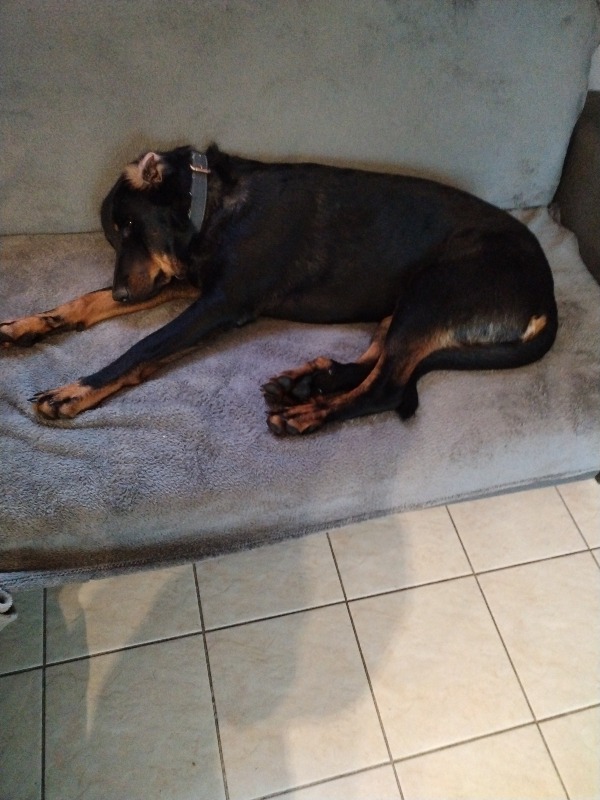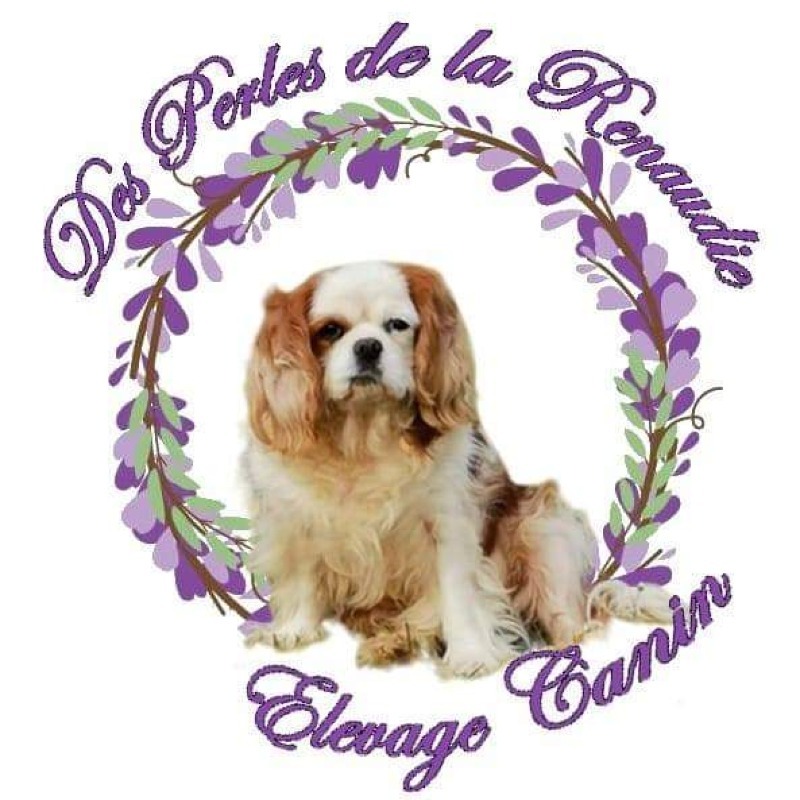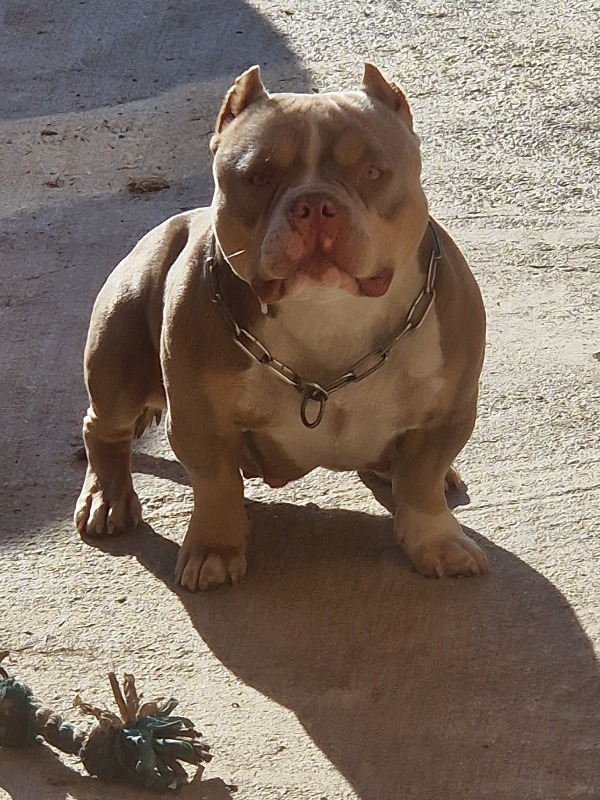Beauce sheep dog
Welcome to our page dedicated to the breed of dog beauce sheep dog!
Here, you will find all the useful information about beauce sheep dog. This descriptive profile will allow you to discover the aspects of this breed. You can notably consult information about the average price, monthly and annual upkeep expenses, their health, name ideas, as well as their official recognition by competent authorities.
Explore this page to discover everything you need to know.
Overall description of the breed
The Beauceron, also known as the Bas-Rouge or Berger de Beauce, originated in France at the end of the 19th century, the result of various crosses with sheepdogs. The selection process was rather rustic, selecting only those dogs that were fit for work, while the others had to survive on their own in the mountains, which left them little chance of survival.
The Beauceron was first exhibited in 1897, but its appearance was unattractive, with a fairly strong skull, a muzzle that was broad at the base and tapered towards the tip, a harsh, rough coat and cropped ears. These first public outings showed a semi-wild, uncomfortable and even aggressive dog, the result of the selection method applied by French shepherds.
Over time, the Beauceron evolved, moving closer to urban environments, and its selection became less focused on guarding or defending flocks. Their character has softened, making them loyal companions. However, they are not very docile and can be difficult to train if you are not firm.
The Beauceron breed was finally recognised by the F.C.I. on 25 November 1963, and the most recent update of the official standard was published on 25 October 2006.
Often confused with the Doberman because of its black and tan coat, the Beauceron is distinguished by its hardiness and solidity. They keep a full tail and their hind legs must have clearly visible dewclaws, which is one of the breed's distinctive features. Beaucerons have thick, dense hair, especially on the neck and shoulders, and dark, even black eyes most of the time.
Beaucerons are loyal and faithful dogs. They are very attached to the people around them, whether in the family or with other dogs, and often develop a special relationship with a particular person, trusting them unwaveringly and obeying them more readily.
Energetic and hardy, Beaucerons also have a jovial, playful nature. They particularly enjoy long play sessions or walks with their owners. They need a rigorous environment if they are to feel at ease and balanced on a daily basis. They are calm indoors, but enthusiastic outdoors.
Beaucerons are excellent family dogs, reliable and ready to do anything to please their owners, for whom they have boundless love.
Beaucerons are large dogs, with a height at the withers ranging from 65 to 70 cm (25" to 27") for males and 63 to 68 cm (24" to 26") for females. Their average weight is between 32 and 45 kg (70 to 100 lbs) for males and between 30 and 39 kg (66 to 88 lbs) for females.
Awareness of acquiring an animal
Each animal is a sensitive being, deserving love, attention and care.
When you choose to adopt an animal, you take on the responsibility of ensuring its health and well-being throughout its life.
To learn more about animal welfare, we invite you to consult our FAQ by clicking the button below:
Origins
The Beauceron, also known as the Berger de Beauce, originates from France. This shepherd dog appeared in the plains of Beauce, an agricultural region located southwest of Paris. Used primarily for guarding and herding livestock, it stood out for its robustness and intelligence. The first mentions of the Beauceron date back to the 16th century, but it was only at the end of the 19th century that it was officially recognized as a distinct breed. Thanks to its exceptional working qualities and versatility, the Beauceron has been able to adapt to various tasks over the centuries, ranging from herding livestock to guard and protection missions. Its popularity has crossed borders, making it a beloved companion in many countries.
History
The history of the Beauceron is closely linked to that of French shepherds. As early as the 19th century, it was already well established as a versatile shepherd dog, used for guarding and herding flocks. In 1896, the breed was officially recognized and a standard was established by the Club des Amis du Beauceron. During both World Wars, the Beauceron was used by the French army for various missions, including as a messenger and search dog for the wounded. After World War II, the breed experienced a revival thanks to the efforts of breeders who worked to preserve its qualities. Today, the Beauceron is not only appreciated for its working abilities, but also as a companion and sport dog.
Standard
The Beauceron breed standard is defined by several specific criteria. The Beauceron is a large dog, well-proportioned and muscular. Males measure between 65 and 70 cm at the withers, while females measure between 61 and 68 cm. Its coat is short and dense, with a fine and tight undercoat. The Beauceron's coat is generally black and tan, although the harlequin color is also accepted. The head is long and well sculpted, with dark and expressive eyes. The ears, naturally drooping, can be cropped to a point in countries where this is allowed. Its tail is long and carried low, forming a slight curve at the end.
Physical characteristics
The Beauceron is a large, robust and well-proportioned dog. Males measure between 65 and 70 cm at the withers and weigh between 30 and 45 kg, while females measure between 61 and 68 cm and weigh between 25 and 40 kg. Its coat is short and dense, with a fine and tight undercoat, providing good protection against the weather. The most common coat colors are black and tan, with well-defined tan markings above the eyes, on the muzzle, throat, chest, legs, and under the tail. There is also a harlequin variety, with a blue and black coat sprinkled with spots. The ears are naturally drooping, but can be cropped to a point in some countries. Its tail, long and slightly curved at the end, adds to its noble and imposing appearance.
Character
The Beauceron is known for its balanced character and intelligence. It is a loyal, protective, and courageous dog, who makes an excellent house guardian. He is naturally suspicious of strangers, but once he has established a relationship of trust, he is affectionate and devoted. His protective instinct is highly developed, making him particularly vigilant and reactive in the face of threats. The Beauceron is also a very active dog, needing a lot of exercise to be happy and balanced. It is important to provide him with firm and consistent training from a young age to channel his energy and intelligence. Well socialized, he can be gentle and patient with children, but his size and energy require supervision.
Life expectancy
The life expectancy of a Beauceron is generally between 10 and 12 years. As with all dog breeds, good nutrition, regular veterinary care, and an active lifestyle help prolong the dog's life. Beaucerons are generally robust and do not suffer from many hereditary diseases, although they may be prone to certain conditions such as hip dysplasia and heart problems. It is important to monitor their health and regularly consult a veterinarian for routine check-ups. An active life, with plenty of exercise and mental stimulation, is essential to keep the Beauceron healthy throughout its life.
Exercise and activity needs
The Beauceron is an extremely active dog that needs a lot of exercise to stay healthy and happy. It is recommended to offer him at least two hours of intense physical activity per day. This can include long walks, running, playing fetch, and training sessions. The Beauceron also excels in dog sports such as agility, canicross, and tracking, which allow him to channel his energy and stimulate his mind. Without adequate exercise, the Beauceron can become frustrated and develop destructive behaviors. A spacious garden where he can freely run around is ideal, but this dog can also adapt well to apartment living as long as he can get enough exercise.
Recommended diet
The Beauceron's diet should be balanced and tailored to its high energy needs. It is recommended to give high-quality kibble, rich in proteins and essential nutrients. The daily ration varies according to its age, weight, and level of activity, but usually ranges between 400 and 600 grams of kibble per day, divided into two meals. For an adult Beauceron, the monthly cost of food can vary between 50 to 100 euros. It is also possible to supplement its diet with raw meat, vegetables, and dietary supplements, after consultation with a veterinarian. A good diet contributes to its overall health and disease prevention.
Training and obedience
The Beauceron's education should be started from a young age to channel its energy and intelligence. This dog is very receptive to training, provided the approach is firm but kind. Early socialization is essential to teach it to interact appropriately with humans and other animals. The Beauceron responds well to positive reinforcement training methods, such as rewards and praise. Regular, short, and varied training sessions help maintain its interest and strengthen its obedience. Due to its protective instinct and natural vigilance, consistent and structured education is necessary to prevent aggressive or dominant behavior.
Behavior with children
The Beauceron can be an excellent companion for children, provided that it is well socialized and properly trained. It is generally patient and protective with the younger ones, but its large size and overflowing energy require supervision to avoid accidents. It is important to teach children to respect the dog and interact with him in an appropriate manner. Games should be monitored to ensure they remain safe and enjoyable for everyone. Thanks to its loyal and affectionate nature, the Beauceron can develop very strong bonds with children, becoming a loving and protective member of the family.
Compatibility with Other Animals
The Beauceron can live with other pets if well socialized from a young age. Due to its herding and protective instincts, it can sometimes be dominant or territorial. A gradual and supervised introduction to other dogs is recommended to avoid conflicts. Early socialization is also crucial when it comes to cats and other small animals. The Beauceron has a strong prey drive, so it is important to monitor its interactions with smaller animals. With proper training and adequate socialization, the Beauceron can live harmoniously with other pets.
Grooming needs
The Beauceron has short and dense fur, which makes grooming relatively easy. A weekly brushing is usually sufficient to remove dead hairs and keep the coat clean and healthy. During shedding seasons, in spring and autumn, more frequent brushing may be necessary to manage hair loss. Bathing is only necessary when the dog is particularly dirty or smelly. It is important to regularly check and clean the ears to prevent infections. Claws should be trimmed if they do not wear down naturally, and special attention should be paid to dental hygiene to prevent oral health problems.
Health
The Beauceron is generally a sturdy and healthy dog, but like all breeds, it can be prone to certain hereditary conditions. Hip dysplasia is a common concern, so it is important to choose a breeder who performs screening tests. Heart problems and some eye conditions can also occur. Regular veterinary check-ups and a balanced diet help maintain the Beauceron's health. It is essential to monitor its weight and provide enough exercise to prevent obesity, which can exacerbate other health problems. Up-to-date vaccination and regular parasite treatments are also important for its overall health.
Average price
The price of a Beauceron can vary depending on several factors, including the lineage, the reputation of the breeder, and the geographical location. Generally, the price of a Beauceron puppy ranges from 800 to 1500 euros. Puppies from champion bloodlines or with parents who have won prizes in competitions can fetch higher prices, sometimes up to 2000 euros or more. It is crucial to choose a reputable and ethical breeder who conducts health tests on their breeding stock to ensure a healthy puppy. Additional costs to consider include veterinary expenses, food, training, and necessary equipment for the dog.
Expenses
Monthly expenses for a Beauceron can vary depending on several factors such as food, veterinary care, toys, and accessories. On average, it costs between 80 and 150 euros per month to meet its needs. This includes around 50 to 100 euros for quality food, 10 to 20 euros for routine veterinary care (vaccinations, deworming), and 20 to 30 euros for accessories, toys, and possibly training courses. Expenses may increase in case of health problems requiring specific care or medical treatments.
Name ideas
Choosing a name for a Beauceron can be a fun task. Here are some suggestions that fit well with this breed: Max, Rex, Zeus, Loki, Django, Leo, Duke, Rocky, Titan, Sparky, Bruno, Thor, Atlas, Hugo, Oskar, Ares, Jax, Blitz, Shadow, Diesel. These names reflect the strength and noble character of this breed. When choosing a name, it is advisable to choose a short and easy to pronounce name, preferably with a clear consonance that will easily attract the dog's attention.
Legislation and regulation
In France, the Beauceron is not classified among dangerous dog breeds (category 1 or 2), which makes its adoption and detention easier. However, it is important to inquire about local regulations regarding large dogs, as some municipalities may impose specific restrictions. In other countries, regulations may vary. For example, some states or countries may require the registration of the dog, behavior tests, or specific insurance for large dog owners. It is always recommended to check local laws before acquiring a Beauceron.
Official recognition
The Beauceron is recognized by several cynological organizations around the world. In France, it is recognized by the Société Centrale Canine (SCC) and registered in the Livre des Origines Françaises (LOF). Internationally, it is recognized by the Fédération Cynologique Internationale (FCI) under standard No. 44. In the United States, it is recognized by the American Kennel Club (AKC) and placed in the herding group. In Canada, it is recognized by the Canadian Kennel Club (CKC). In Great Britain, it is recognized by the Kennel Club (KC). This recognition allows the Beauceron to participate in dog shows and working competitions around the world.
Pedigrees
Beaucerons pedigrees can be obtained from various recognized breed clubs in different countries. In France, the Club des Amis du Beauceron (CAB) is the main organization, providing information on the lineage and pedigrees of the dogs. In the United States, the Beauceron Club of America (BCA) is the recognized authority, while in Canada, the Canadian Beauceron Club plays a similar role. In Great Britain, the British Beauceron Club provides pedigrees and information on the breed. These clubs work in collaboration with national cynological organizations to ensure the purity and quality of Beauceron lineages.
Destination and usage
The Beauceron is a versatile breed used in various fields due to its skills and temperament. Historically, it was mainly used as a herding dog for driving and guarding herds. Nowadays, it is also used as a guard dog, search and rescue dog, and even as a police or military dog. Thanks to its intelligence and learning ability, it excels in canine sports such as agility, tracking, and canicross. As a companion dog, it is appreciated for its loyalty and dedication to its family. Its need for mental and physical stimulation makes it ideal for active and committed owners.
Prohibitions
The Beauceron is not subject to specific restrictions in most countries, unlike some breeds classified as dangerous. However, it is important to respect local regulations regarding large dogs, which may include leash requirements, muzzle requirements, or restrictions on access to certain public places. In France, the Beauceron does not belong to any category of dangerous dogs, but proper training and socialization are essential to prevent any problematic behavior. It is also crucial to ensure that the dog comes from a recognized breeder and meets the breed standards to avoid behavioral or health problems related to irresponsible breeding.
Breeders of Beauce sheep dog
Want to see more breeders of Beauce sheep dog?
Check out the page of our directory listing all breeders of Beauce sheep dogClassified Ads of beauce sheep dog
No of beauce sheep dog classified ads are available on Preeders.
If you’re a breeder, sign up for free now and be the first to post a classified ad
Breed clubs of beauce sheep dog
No of beauce sheep dog breed clubs are currently registered on Preeders.
If you would like to highlight your breed club, sign up for free now and be the first to appear on this page.





